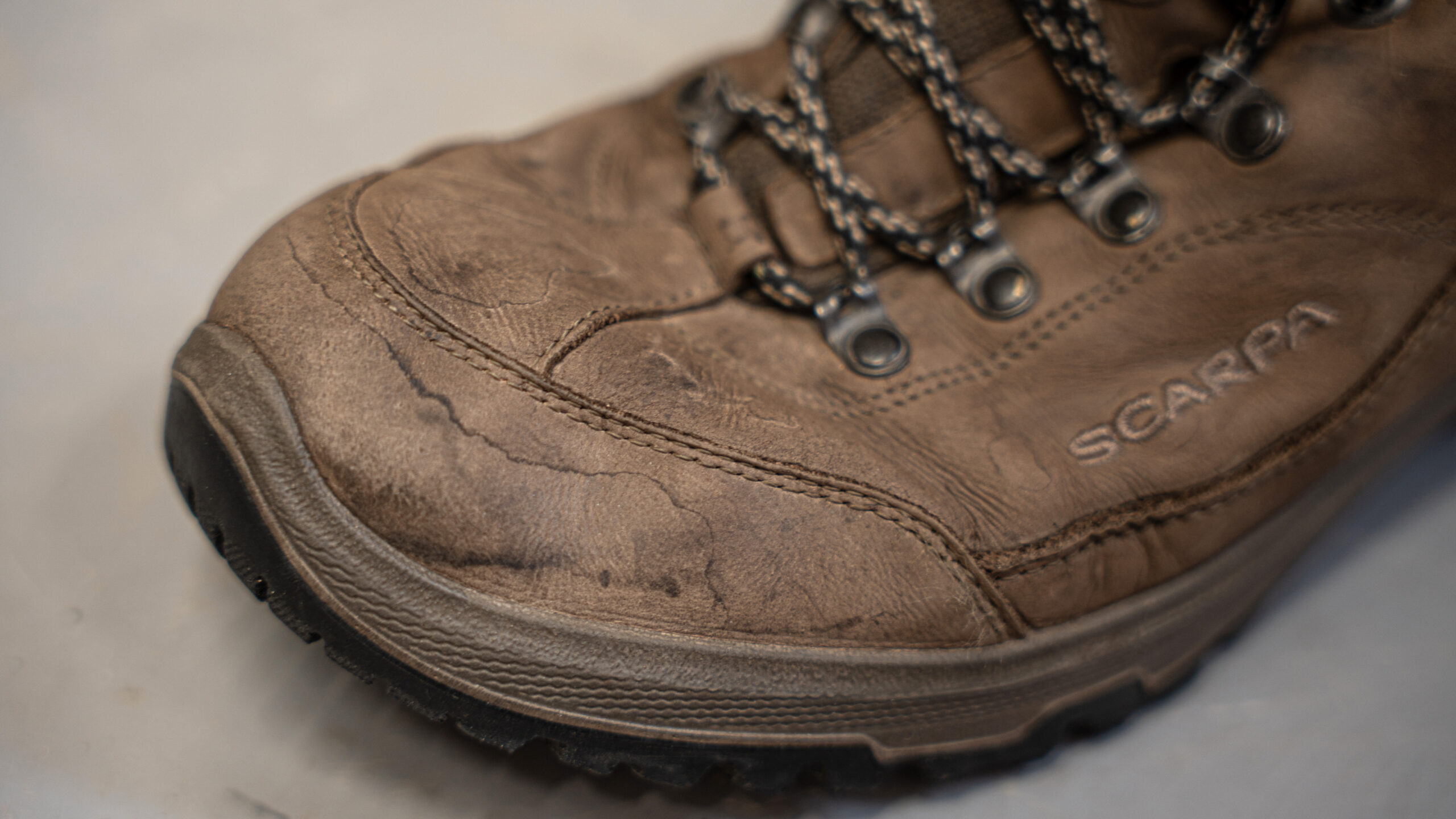Your hiking boots are big investment in your outdoor adventures. They won’t last forever if you don’t take proper care of them. From neglecting to clean them after a muddy hike to wearing the wrong socks. There are many ways you could be unintentionally damaging your boots. In this article we will show you ways you’re ruining your walking boots.
Ways You’re Ruining Your Walking Boots: Incorrect fit
Problem
Getting footwear to fit correctly is a tricky task. In-person we can assess the width, depth and overall shape of your foot and match it with a specific model of shoes or boots. We’re aware this isn’t always possible, which is why we are here to help virtually. But, if you owning a pair of boots that just don’t fit, you’ll most likely encounter split fabrics and very sore feet. Split fabrics are usually down to an excess of space above your foot, causing the fabrics to crease sharply with each step. Over time, this unnatural amount of fabric-folding will ruin the uppers.
Solution
If they’ve split, it’s time for the bin, but if you’ve caught this issue before the ultimate demise of your favourite boots, you have two options. A), lift your foot up within the boots with a volume reducer (a thin piece of compressed foam that fits neatly under your footbed), or B), replace your boots with a pair that fits without any modification. The first option is worth a try, but it’s not a guaranteed solution unfortunately.Ways You’re Ruining Your Walking Boots: Force Drying
Problem:
We see a huge selection of boots and shoes bite the dust due to this and unfortunately, it isn’t that well known. Walking boots and shoes use heat-sensitive glues to fasten various bits together; drying your boots with a hairdryer, radiator, wood burner or campfire melts the glue and results in the boot falling apart at the seams. If your footwear is also made of leather, it will dry the leather out, resulting in cracks and splits. You can see a pair below that are beginning to dry out and will crack if left untreated.Solution:
To dry the footwear correctly, first clean them; they can’t dry if they’re covered in inches of thick mud! Leave the boots to air dry naturally in an area of the house — you can accelerate the process by removing the footbed and placing balls of newspaper inside, however, make sure not to over-stuff the boots as this can deform them over time. Attempt to change the newspaper every hour or so until fully dry.
Incorrect Use
Problem:
The sole unit of your footwear is designed for a specific purpose. You wouldn’t choose an off-road tyre for your car if your journeys consist almost entirely of motorway. On the same note, a pair of trail running shoes designed for off-road use won’t last as long if most of your running is done on the road. That’s not to say you can’t use your shoes or boots on the road every now and again, but just bear in mind that they will wear out faster.Ways You’re Ruining Your Walking Boots: Salt Water
Problem:
Rusting/oxidising eyelets/hooks. We all love a good coastal walk, but if saltwater is left on these metallic surfaces for too long, it’ll degrade them and you’ll either have to fork out for a new pair of boots or a costly repair service.
Solution: Just make sure to wash any saltwater off as soon as you get the chance. Eyelets and hooks are a pain to replace, so prevention is certainly better than cure in this case.

Leave a Reply